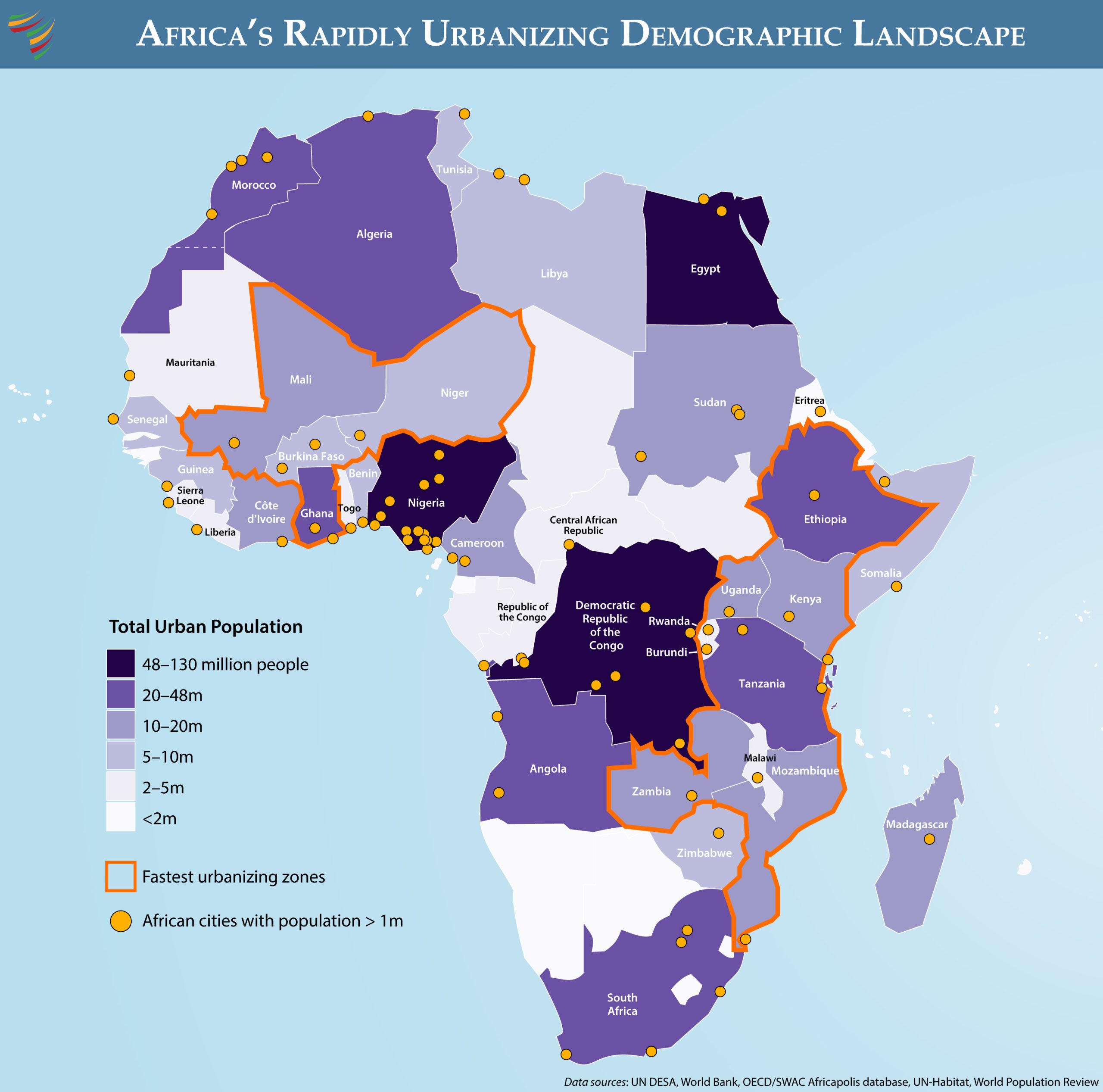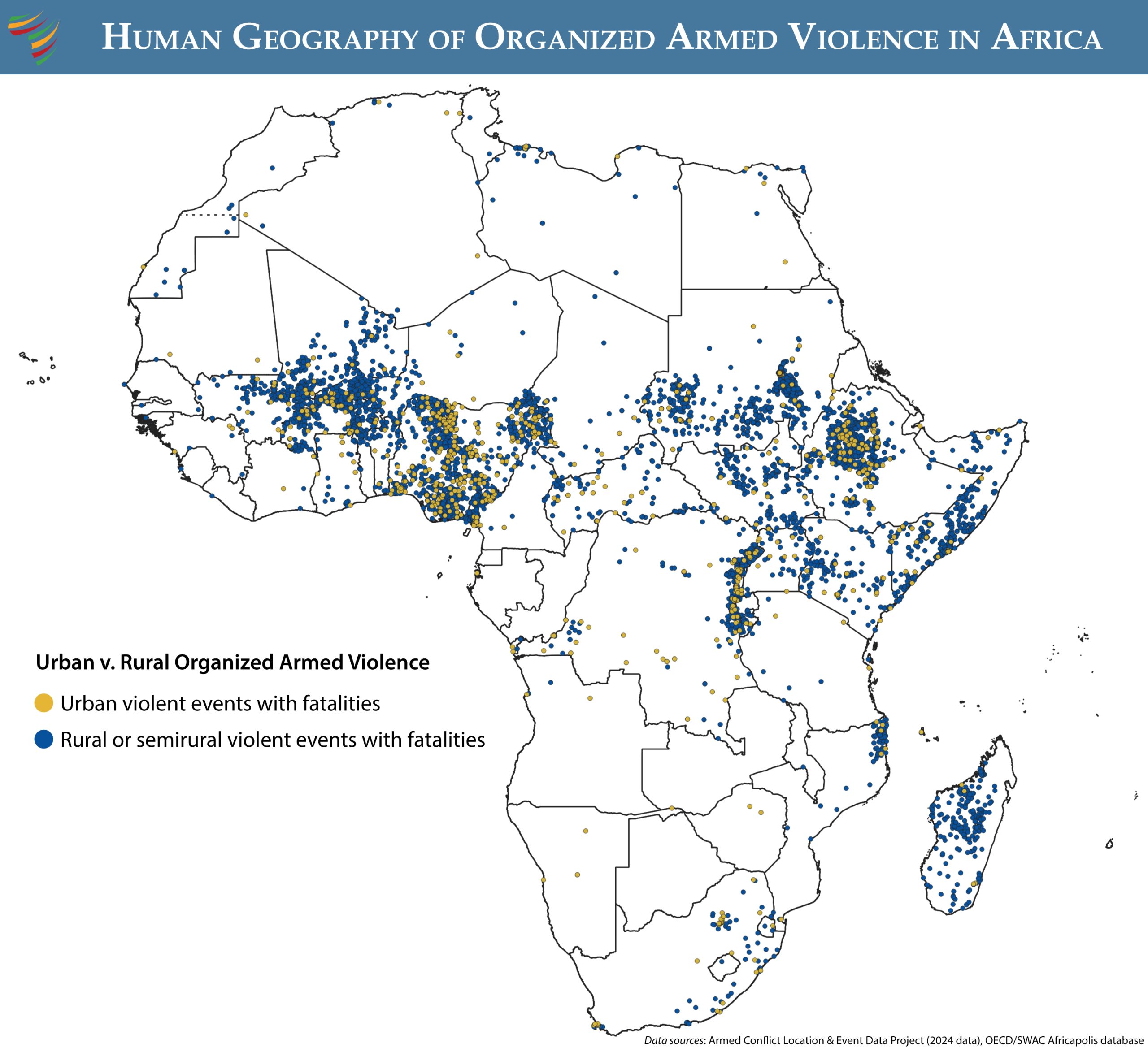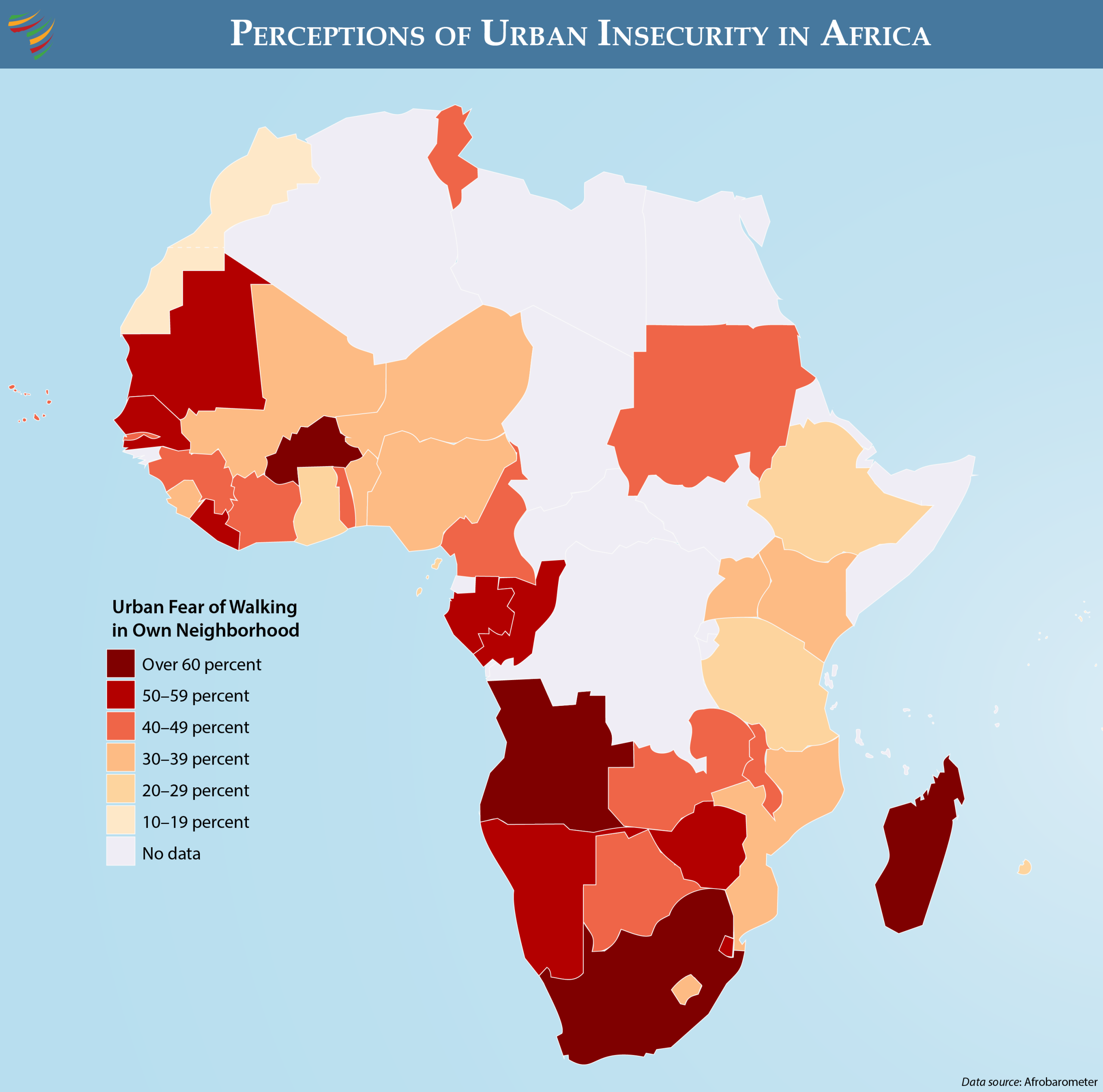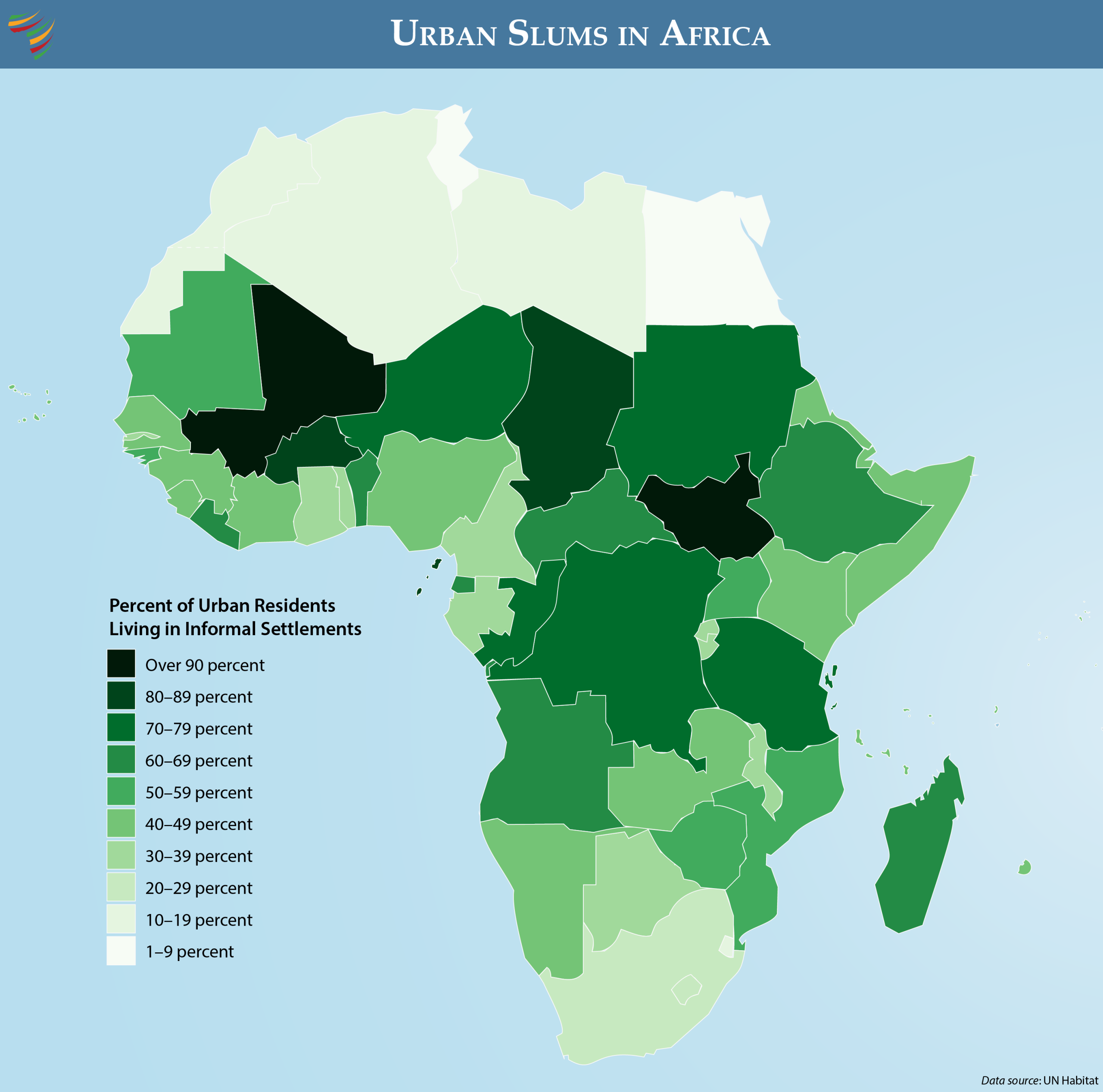English | Français
- Africa is the world’s fastest urbanizing region, with cities growing at an average rate of 3.5 percent per year. By 2050, the continent is expected to add nearly 1 billion people, rising from 1.5 to 2.5 billion residents. Eighty percent of this population growth will occur in cities.
Africa’s pace of urban expansion is unprecedented in human history—and portends fundamental shifts in approaches to security.
- Nearly half of Africans—over 700 million people—already live in urban areas, a number projected to double to 1.4 billion by 2050. This pace of urban expansion is unprecedented in human history—and portends fundamental shifts in approaches to security.
- More than 60 African cities now have populations over 1 million—on par with Europe. By 2050, that number is projected to reach 159 cities.
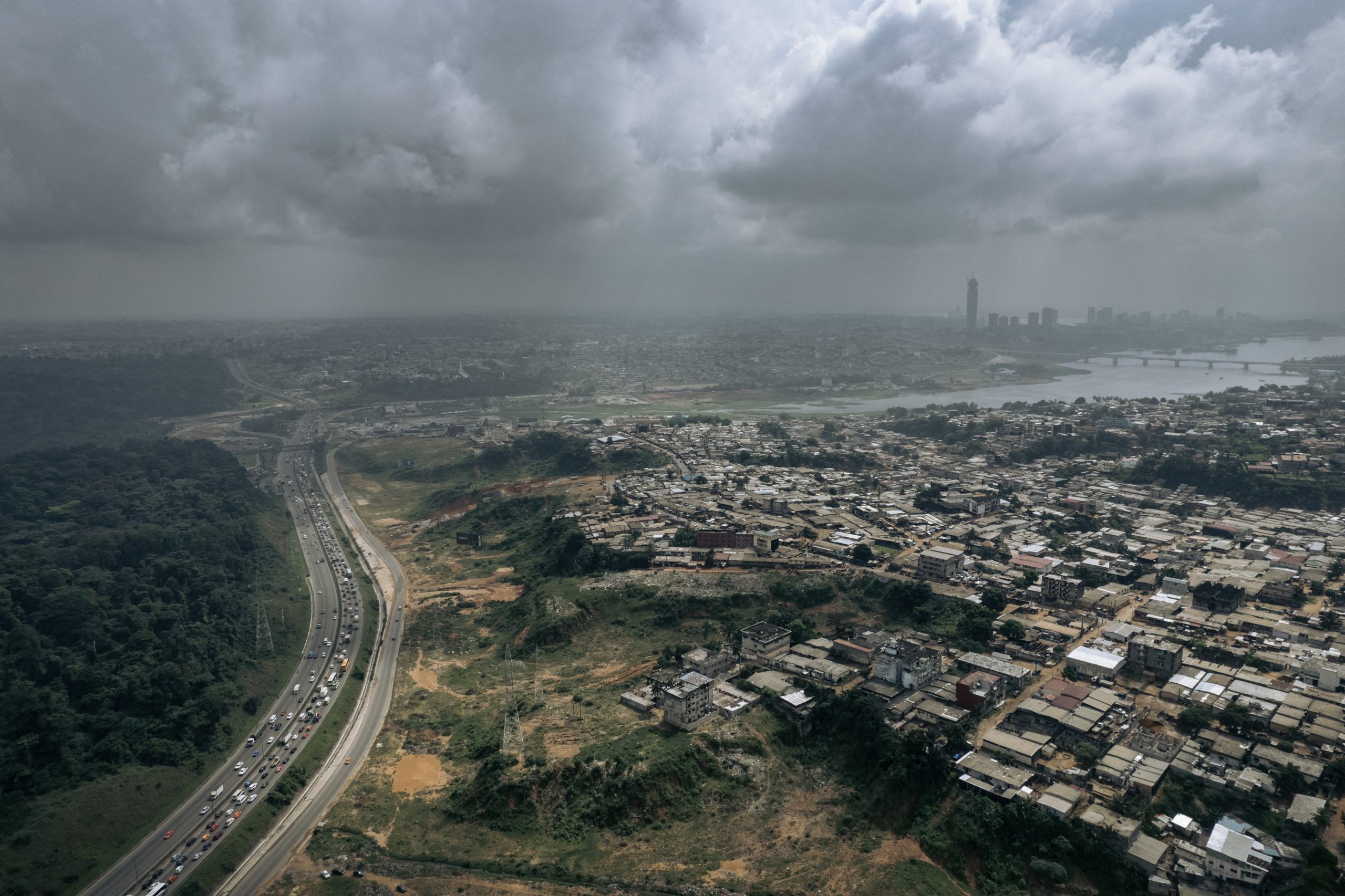
Aerial view of the Yopougon district beside a highway running to Abidjan, Côte d’Ivoire. (Photo: AFP/Alexis Huguet)
- Africa’s fastest urbanization rates are clustered in two geographic corridors: the western Sahel (plus Ghana) and an East African belt stretching from Ethiopia to Mozambique. These zones illustrate the complex combination of forces driving urban population growth on the continent.
- Much of Africa’s urban growth is coming from within cities. In countries like Uganda, Ethiopia, and Rwanda, 60–70 percent of urban growth is an outcome of births outpacing deaths. This reflects improved health services combined with relatively high urban fertility rates—resulting in a lag in the demographic transition.
- Urban pull factors are accelerating migration, especially in countries like Kenya, Tanzania, and Ghana, where cities like Nairobi, Dar es Salaam, and Accra offer access to jobs, education, and services. These cities are magnets for rural youth, who are drawn by both formal and informal economic opportunities.
- Rural push factors—including conflict, displacement, food insecurity, land pressure, and flooding—are particularly acute in the Sahelian countries of Mali, Niger, and Burkina Faso. Militant Islamist violence and environmental stress have displaced millions, many of whom have fled to cities such as Ouagadougou, Niamey, and Bamako in search of safety and basic services.
Africa’s Population and Urbanization Outlook
| Year | Total Population (billion) | Urban Population (percent) | Urban Population (billion) | Number of Cities > 1 million |
|---|---|---|---|---|
| 2025 | ~1.54 | ~45% | ~0.70 | ~60 |
| 2030 | ~1.73 | ~48% | ~0.97 | ~80 |
| 2050 | ~2.47 | ~60–65% | ~1.4–1.5 | ~159 |
Sources: Worldometers.info, United Nations, Africapolis/OECD, AfDB projections.
Urban Areas Increasingly Impacted by Conflict
- Even as urbanization accelerates, rural areas remain the epicenter of organized armed conflict in Africa. In 2024, 74 percent of organized armed violent events occurred in rural or semirural areas, while only 26 percent occurred in cities with populations over 20,000 (18,827 rural or semirural events versus 6,647 urban events). This divide reflects the operational patterns of most African armed groups, which continue to function as rural insurgencies.
Africa’s growing urbanization coupled with its persisting, unresolved conflicts suggest that Africa’s wars will take on an increasingly urban quality.
- Militant groups tend to flourish in remote, lightly populated areas—particularly where state presence is weak. In the western Sahel, militant Islamist group factions operate in sparsely governed rural zones, where they can establish control over territory and resources.
- Nonetheless, 587 of 4,930 African cities suffered fatalities linked to organized armed violence in 2024. This figure has been rising in recent years, indicating that Africa’s urban areas are progressively becoming a target in the continent’s civil wars or entrenched insurgencies.
- Africa’s growing urbanization coupled with its persisting, unresolved conflicts suggest that Africa’s wars will take on an increasingly urban quality with profound implications for casualties, security policies, and force structures.
- 92 percent of the urban fatalities linked to organized armed violence in Africa in 2024 are concentrated in eight countries (Sudan, Somalia, Burkina Faso, Mali, Niger, Nigeria, Ethiopia, and the Democratic Republic of the Congo (DRC)).
The growing proliferation of drones in Sudan’s conflict has made urban areas increasingly susceptible to attack.
-
- Sudan may be a precursor of this emerging pattern. Sudan is the epicenter of organized armed violence impacting urban centers in Africa, accounting for 38 percent of all such fatalities across the continent. These 5,442 deaths represent 35 percent of reported conflict-related fatalities in Sudan. The conflict between the Sudan Armed Forces and Rapid Support Forces has engulfed population-dense cities like Khartoum, Omdurman, and El Fasher, turning urban centers into active battlefields. The growing proliferation of drones in this conflict has made urban areas increasingly susceptible to attack.
- The militant Islamist insurgencies in Burkina Faso, Mali, and Niger have resulted in 1,165 fatalities in urban areas (9 percent of the total regionally). Recent incursions into urban peripheries and municipal centers—such as the September 2024 Bamako attack—signal the possibility of increasing numbers of urban casualties as the insurgencies advance southward and westward into more populated areas in these countries.
- The 644 urban-based fatalities linked to organized violence in Somalia comprises 12 percent of the total fatalities in this conflict-wracked country. These incidents—mostly in Mogadishu, Baidoa, and Kismayo—reflect al Shabaab’s reliance on forms of remote violence in urban areas including drones, IEDs, and bombings, even as the group engages in battles with the military and state militias in rural strongholds.
- Militant Islamist groups, such as Boko Haram and the Islamic State in West Africa in Nigeria, have regularly conducted attacks in urban areas including Maiduguri.
- Nigeria is also subject to attacks by organized criminal gangs where violent groups such as Black Axe have contributed to high numbers of urban fatalities.
- Armed militant groups in the eastern DRC, such as the M23, operate in and around urban hubs like Goma, Bukavu, and Uvira.
Urban Areas Confront Other Forms of Violence
Many urban areas face additional forms of violent crime such as assaults, robberies, murders, and sexual offenses, requiring a different set of policy responses.
- 40 percent of Africans living in urban areas report feeling unsafe walking in their own neighborhoods, (versus 33 percent of Africans living in rural areas).
- Sprawling informal settlements around many African urban areas (accounting for roughly half of Africa’s urban population) are changing the nature and locus of urban insecurity. In informal settlements, 46 percent of residents report feeling unsafe in their neighborhoods.
- Informal settlements often lack policing or access to formal legal processes, contributing to a sense of vulnerability for residents.
- High youth unemployment in cities, exacerbated by the growing youth population, can also become a contributor to criminal activity, gang involvement, and violence.
- African cities often serve as key nodes in transnational organized crime networks, fueling corruption and violence that undermine urban security. Smuggling and trafficking rings often rely on urban infrastructure such as port cities in West Africa to illicitly transit drugs, weapons, and people. While these trafficking routes can shift quickly, urban hubs—as key entry and exit points for flows of illicit goods—are more stable and, thus, offer opportunities to disrupt organized criminal flows.
Need for Urban Governance and Security Innovations
The rapid urbanization of many African countries will require a reassessment of strategies to provide citizen security. While armed forces are still vital for border security and addressing the threat of organized armed groups in rural areas, policymakers must increasingly consider how the threat from organized armed groups impacts urban populations.
The rapid urbanization of many African countries will require a reassessment of strategies to provide citizen security… At the least, this will require enhanced training for police forces.
The growing population density of Africa’s urban areas and the sprawling of peri-urban and informal settlements—both often not under municipal authority—are also reshaping the nature of security threats on the continent. At the least, this will require enhanced training for police forces, which comprise 48 percent of uniformed security force personnel across Africa. Decisions on force size, capabilities, deployments, roles, and authorities within population centers will also need to be reconsidered.
Africa’s swelling populations have spurred various noteworthy initiatives in city governance, planning, and security strategy.
- Data and Informed Decision-Making—In order to assess and intervene to improve urban security, African cities are investing in measuring their cities to better manage them. Beginning with southern Africa, Good Governance Africa has launched a project to develop indicators for African cities, with the intention of better informing decision-makers on priority areas for improvements.
- Expanding Infrastructure, Housing, and Services—The United Nation’s Participatory Slum Upgrading Programme (PSUP), launched in 2008 in collaboration with African governments, is being implemented in over 25 African countries, 6 of which have developed National Urban Development and Slum Upgrading and Prevention Policies. In 2022, PSUP entered its third phase in Abidjan, Côte d’Ivoire, with funding to enhance basic services—including roads, sanitation, electricity, water, education, and health—in five neighborhoods. This phase emphasizes community-managed funds to improve living conditions and stimulate local employment opportunities.
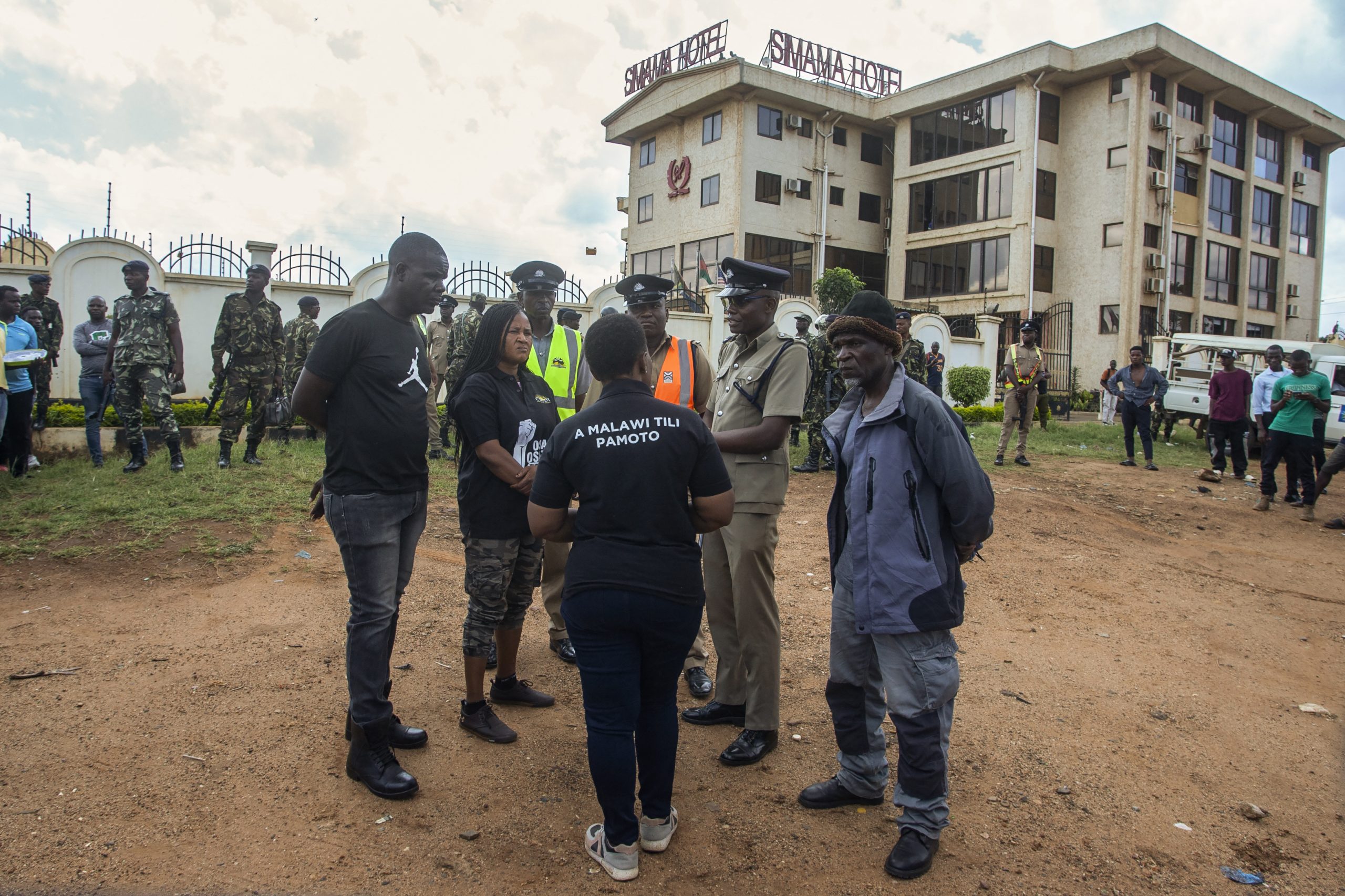
Demonstrators speak with police officers during a demonstration in Lilongwe, Malawi. (Photo: AFP/Amos Gumulira)
- Youth Employment Initiatives—City and state governments in Africa are developing youth employment programs that serve as models for urban policymakers. In Nigeria, the EdoJobs initiative, launched by the Edo State government, offers skills training and job placement services to combat youth unemployment, contributing to a reduction in the state’s unemployment rate. In Kenya, the Kenya Youth Employment Opportunities Project (KYEOP), supported by the national government, provides training and business grants to youth. KYEOP has reached over 358,000 young people with 77 percent of participants securing employment.
- Community Policing Programs—In the Abobo commune of Abidjan, Côte d’Ivoire, local “vigilance committees” have partnered with police to address rising urban crime. These committees act as intermediaries between residents and law enforcement, facilitating communication and trust. This collaborative approach has contributed to improved community-police relations and more effective crime prevention strategies.
A key to managing the security challenges of Africa’s urban demographic shift will be to avoid treating entire neighborhoods or populations as security threats. Historically, such approaches—marked by cordoning off areas of the city, forced evictions, and police crackdowns—have only deepened mistrust and made security sector heavy-handedness one of the most damaging forms of insecurity in fast growing cities like Lagos or Kinshasa. Instead, local authorities must work to understand these communities, recognize their role in urban resilience and vitality, and integrate them more fully into the city’s economic and social systems.
Additional Resources
- Good Governance Africa, “The Future of African Cities,” Africa in Fact 73, April-June 2025.
- Organisation for Economic Co-operation and Development, Africa’s Urbanisation Dynamics 2025: Planning for Urban Expansion (Paris: OECD, 2025).
- Organisation for Economic Co-operation and Development, Urbanisation and Conflicts in North and West Africa (Paris: OECD, 2023).
- Maxime Ricard and Kouamé Félix Grodji, “Collaborative Policing and Negotiating Urban Order in Abidjan,”Africa Security Brief No. 40, Africa Center for Strategic Studies, November 2021.
- Max Bearak, Dylan Moriarty, and Júlia Ledur, “Africa’s Rising Cities: How Africa Will Become the Center of the World’s Urban Future,” Washington Post, November 19, 2021.
- Stephen Commins, “From Urban Fragility to Urban Stability,”Africa Security Brief No. 35, Africa Center for Strategic Studies, June 2018.
- Sahel and West Africa Club and e-Geopolis Association, Africapolis.org website.


